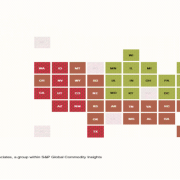San Diego is going to need lots of renewable energy if it’s going to nix planet-warming emissions from its economy in the coming decades, as it has pledged to do. One new study shows the county could technically generate what its people will need within its borders, but San Diego will probably need help from its neighbors.
Enter Imperial County. With a population 18 times smaller than San Diego, this 4.4 thousand square mile swath of land is rich in resources. It has first dibs on Colorado River water over entire western states, fueling a $2 billion agricultural industry that provides much of America’s winter vegetables.
Click here to read the full article
Source: Voice of San Diego
—
If you have any questions or thoughts about the topic, feel free to contact us here or leave a comment below.






